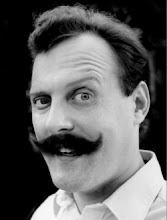Film Production - Super 8 Spielberg Abrams
If you're a filmmaker (real film, not a video hobbyist), you may have an affection for early small-format motion picture film. I know I do.
From 1932 on, you may remember Regular 8mm (American) and 9.5mm (European) formats. Regular 8mm is split Double-16mm, with twice as many sprocket holes as 16mm. 9.5mm image is almost big as that of 16mm, with the sprocket holes up the middle of the film.
In 1965, Kodak released a new format for amateur movie makers, called SUPER 8MM. It had smaller sprocket holes, with the extra space going for picture area. Super 8mm image is about 50% bigger than Regular 8mm.
My first movies were Super 8mm, in 1970. It was a wonderful film format. Small, light weight, easy to load and shoot. Kodachrome and Ektachrome and a variety of black-and-white stock. Tri-X and Double-X and Plus-X were great stocks.
Fuji made "Single 8," identical size film, but with improved cameras and a more effects-friendly film cartridge. I shot that, too, it tape-splice intercut perfectly.
"Super 8" Steven Spielberg Producer, J.J. Abrams Director
If you were sneaky (I was), you could shoot double-system sync sound, and do multiple-pass visual effects. I did cel animation, and stop-motion, and glass shots and miniatures, all in Super 8mm.
My friends and I made Super 8mm movies, until one day I realized they were in it for fun, and I needed to make movies for a living. We didn't understand each other any more, and the friendships painfully dissolved. I had to leave Seattle, for the stuff you need to make movies. The sun, for example. Positive attitude, for another.
In the movie "Super 8," the kids' filmmaking is familiar, except for the mic boom. No mic booms in 1970s Super 8mm, unless you had a Super8Sound fullcoat recorder, or an Optasound cassette. (I made a point of collecting my "Dream Rig," when eBay came in).
There were 5 sound cameras, which recorded on a tiny little stripe on the film. Your mic was a little handheld job, to record interviews. I saved a whole year to buy a projector that would record my soundtrack onto my film.
I was Mr. Super 8, so I never really made much 16mm, other than the obligatory BW comic short, and a 16mm drawn-on-film epic, animated against my future Father-in-Law's wonderfully weird "musique concrete" and synthesizer track. I went directly from Super 8mm to 35mm, and later 65mm - the Big Stuff.
Those were all my most passionate movies. I love them just like other people love their children. I learned most in that format, when everything was brand new and exciting.
So, I understand why, when JJ Abrams approached Steven Spielberg with little more than the words "Super 8," Mr. Spielberg signed on as Producer. It's a magic phrase.
Interview Steven Spielberg J.J. Abrams.
How "Super 8" came to be.
16mm
35mm
65mm
Imax
1.37:1
1.66:1
1.77:1
1.85:1
2.39:1
Super 8mm
Regular 8mm
VistaVision
Sunday, May 29, 2011
Subscribe to:
Comments (Atom)
